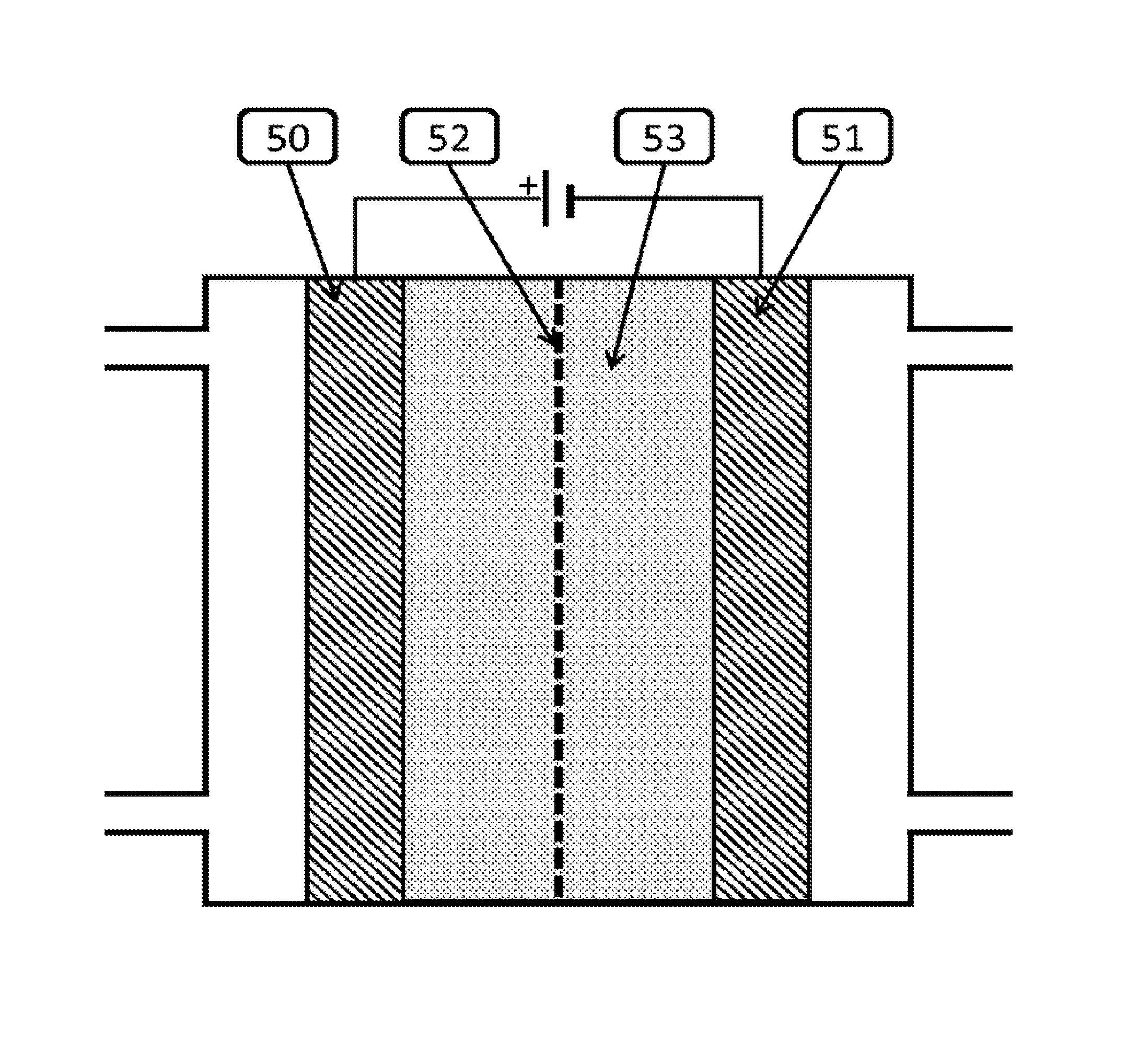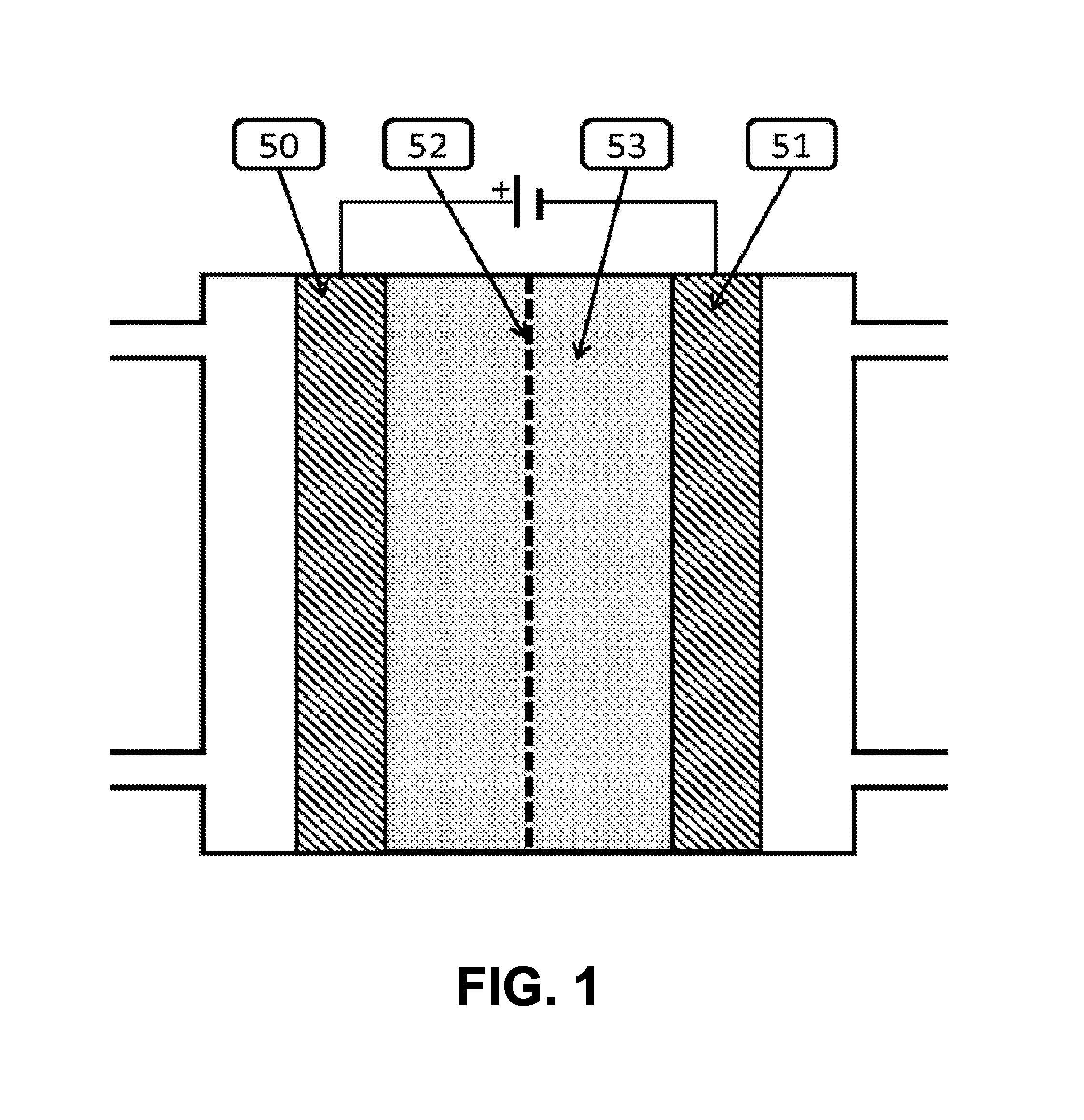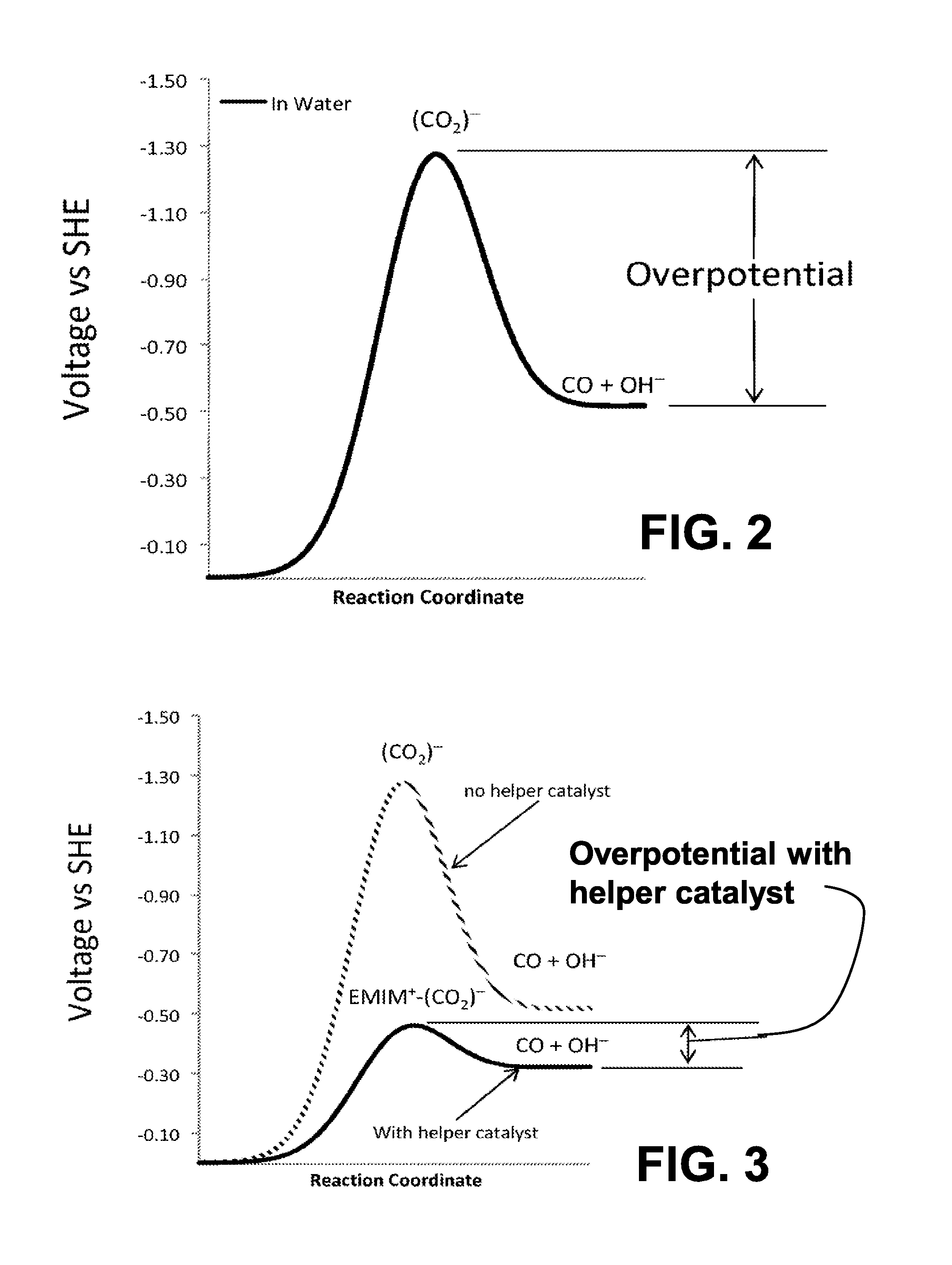Catalyst mixtures
a catalyst and mixture technology, applied in the field of catalysts, can solve the problems of high electron conversion efficiency, lack of catalysts with sufficient activity, and preventing efficient conversion of carbon dioxide into energy-bearing products, and achieve the effects of low rate, low electron conversion efficiency, and high sensor power
- Summary
- Abstract
- Description
- Claims
- Application Information
AI Technical Summary
Benefits of technology
Problems solved by technology
Method used
Image
Examples
specific example 1
Using an Active Element, Helper Catalyst Mixture Including Platinum and 1-Ethyl-3-Methylimidazolium Tetrafluoroborate (EMIM-BF4) to Lower the Overpotential for Electrochemical Conversion of CO2 and Raise the Selectivity (Current Efficiency) of the Reaction
[0090]The experiments used the glass three-electrode cell shown in FIG. 7. The cell consisted of a three-neck flask 101, to hold the anode 108, and the cathode 109. A silver / 0.01 molar silver ion reference electrode 103 in acetonitrile was connected to the cell through a Luggin Capillary 102. The reference electrode 103 was fitted with a Vycor® frit to prevent any of the reference electrode solution from contaminating the ionic liquid in the capillary. The reference electrode was calibrated against the ferrocene Fc / Fc+ redox couple. A conversion factor of +535 mV was used to convert our potential axis to reference the Standard Hydrogen Electrode (SHE). A 25×25 mm platinum gauze (size 52) 113 was connected to the anode while a 0.33 ...
specific example 2
The Effect of Dilution on the Electrochemical Conversion of CO2
[0104]This example shows that water additions speed the formation of CO. The experiment used the Cell and procedures in Example 1, with the following exception: a solution containing 98.55% EMIM-BF4 and 0.45% water was substituted for the 99.9999% EMIM-BF4 used in Example 1, the potential was held for 10 or 30 minutes at −0.6 V with respect to RHE, and then the potential was ramped positively at 50 mV / sec. FIG. 10 shows the result. Notice the peak between 1.2 and 1.5 V. This is the peak associated with CO formation and is much larger than in Example 1. Thus the addition of water has accelerated the formation of CO presumably by acting as a reactant.
specific example 3
Using an Active Element, Helper Catalyst Mixture Including Palladium and Choline Iodide to CO2 Lower the Overpotential for Electrochemical Conversion of CO2 in Water
[0105]The next example is to demonstrate that the invention can be practiced using palladium as an Active Element and choline iodide as a Helper Catalyst.
[0106]The experiment used the Cell and procedures in Example 1, with the following exceptions: (i) a 10.3% by weight of a Helper Catalyst, choline iodide, in water solution was substituted for the 1-ethyl-3-methylimidazolium tetrafluoroborate and (ii) a 0.25 cm2 Pd foil purchased from Alfa Aesar of Ward Hill, Mass., USA, was substituted for the gold plug and platinum black on the cathode, and a silver / silver chloride reference was used.
[0107]The cell contained 52 mg of palladium and 103 mg of Helper Catalyst, so the overall catalyst mixture contained 66% of Helper Catalyst.
[0108]FIG. 11 shows a CV taken under these conditions. There is a large negative peak near zero vo...
PUM
| Property | Measurement | Unit |
|---|---|---|
| voltage | aaaaa | aaaaa |
| temperatures | aaaaa | aaaaa |
| size | aaaaa | aaaaa |
Abstract
Description
Claims
Application Information
 Login to View More
Login to View More - R&D
- Intellectual Property
- Life Sciences
- Materials
- Tech Scout
- Unparalleled Data Quality
- Higher Quality Content
- 60% Fewer Hallucinations
Browse by: Latest US Patents, China's latest patents, Technical Efficacy Thesaurus, Application Domain, Technology Topic, Popular Technical Reports.
© 2025 PatSnap. All rights reserved.Legal|Privacy policy|Modern Slavery Act Transparency Statement|Sitemap|About US| Contact US: help@patsnap.com



